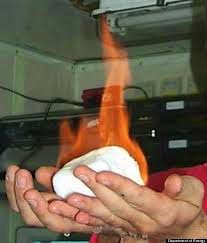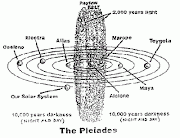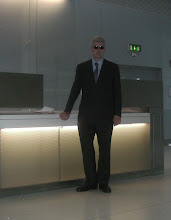

When I heard of laser printed clothes I became a marketing sceptic although the science was so exciting like what about having a printing press on the tilted side of the moon excited. But cautious wise labs cynicism has been but at ease as spider silk simulated laser jet printing compounds could build any structure, with hover technology's. Unique as the company Voxeljet used A total of 54 individual parts for the three vehicle models, including mudguards, doors, bonnets, roofs and more, they were then packaged and transported to Pinewood Studios near London. Started the printing process once the computer files with the design data for all components were available. The models are produced with the layer- by layer application of particle material, that is glued together with a binding agent. As each layer is finished, another is printed on top to build up a 3D model. The parts are then individually cleaned. As the model builders at the Prop shop then meticulously assembled and finished the components. This is done by painted them in the original colour and added chrome applications along with realistic-looking panels to specification included bullet holes for this project.
 In time every factory car will be spun by a laser jet printer, where the consumer can order model straight from their lab top "James Bond's Aston Martin DB5" was put through a series of huge explosions and stunts during the filming of Sky fall, these included one scene which saw the priceless vehicle explode in flames. However, producers have revealed the secret behind the stunts - if they lost a car, they could simply print another. As the three replica cars were built to specification , a third of the size of the real thing, were created using a large scale 3D printer. Using 18 individual parts were printed to create the Aston Martin seen on screen. The Aston Martin DB5 models double for the now priceless original vehicle from the 1960s in the film's action scenes. The models were made by British firm Prop shop Model makers Ltd, which specialise in the production of film props and used Voxeljet to print the cars. Propshop commissioned them to build three plastic models of the Aston Martin DB5, At Voxeljet The CEO Dr Ingo Ederer said "we could have easily printed the legendary sports car in one piece at a scale of 1:3 using our high-end VX4000 printer, which can build moulds and models in dimensions of up to eight cubic metres". But the British model builders were pursuing a different approach.
In time every factory car will be spun by a laser jet printer, where the consumer can order model straight from their lab top "James Bond's Aston Martin DB5" was put through a series of huge explosions and stunts during the filming of Sky fall, these included one scene which saw the priceless vehicle explode in flames. However, producers have revealed the secret behind the stunts - if they lost a car, they could simply print another. As the three replica cars were built to specification , a third of the size of the real thing, were created using a large scale 3D printer. Using 18 individual parts were printed to create the Aston Martin seen on screen. The Aston Martin DB5 models double for the now priceless original vehicle from the 1960s in the film's action scenes. The models were made by British firm Prop shop Model makers Ltd, which specialise in the production of film props and used Voxeljet to print the cars. Propshop commissioned them to build three plastic models of the Aston Martin DB5, At Voxeljet The CEO Dr Ingo Ederer said "we could have easily printed the legendary sports car in one piece at a scale of 1:3 using our high-end VX4000 printer, which can build moulds and models in dimensions of up to eight cubic metres". But the British model builders were pursuing a different approach.  Voxeljet CEO Dr. Ingo Ederer with one of the 3D printers used Aston Martin was as true to detail as possible and for the purpose of integrating numerous functions into the film models. He said they decided on an assembly consisting of a total of 18 individual components. The entire body is based on a steel frame a first like Henry Ford. Voxeljet started the printing process once the computer files with the design data for all components were available. The models are produced with the layer- by layer application of particle material that is glued together with a binding agent. As each layer is finished, another is printed on top to build up a 3D model.The parts are then individually cleaned. A total of 54 individual parts for the three vehicle models, including mudguards, doors, bonnets, roofs and more, these were then packaged and transported to Pinewood Studios near London. The model builders at Prop shop then meticulously assembled and finished the components, spray painted them in the original car colour and added chrome applications along with having realistic-looking bullet holes.
Voxeljet CEO Dr. Ingo Ederer with one of the 3D printers used Aston Martin was as true to detail as possible and for the purpose of integrating numerous functions into the film models. He said they decided on an assembly consisting of a total of 18 individual components. The entire body is based on a steel frame a first like Henry Ford. Voxeljet started the printing process once the computer files with the design data for all components were available. The models are produced with the layer- by layer application of particle material that is glued together with a binding agent. As each layer is finished, another is printed on top to build up a 3D model.The parts are then individually cleaned. A total of 54 individual parts for the three vehicle models, including mudguards, doors, bonnets, roofs and more, these were then packaged and transported to Pinewood Studios near London. The model builders at Prop shop then meticulously assembled and finished the components, spray painted them in the original car colour and added chrome applications along with having realistic-looking bullet holes.  After the finishing process, it is impossible to distinguish the Aston Martin models made with the voxeljet printed model from its original, even in the close-up shots, the firm says.The priceless Aston Martin DB5, which was already used in the first James Bond film exactly 50 years ago, remains unscathed, while one of the elaborately and meticulously constructed models explodes into flames in the film, He said.it could have been an expensive crash, since one of the three models was auctioned off by Christie's for almost £100,000. Once assembled, the models were finished by hand, and were indistinguishable from the full sized versions, according the their makers To ensure that the almost identical to how vehicles were assembled in the past,' said Ederer. In addition to the automotive industry, foundries, designers and artists, the film industry represents an entirely new customer base for voxeljet. This 3D printing is on the cusp of a great future in the film industry. The technology offers fantastic opportunities, since it is usually much faster, more precise and more economical than classic model construction' said Ederer.
After the finishing process, it is impossible to distinguish the Aston Martin models made with the voxeljet printed model from its original, even in the close-up shots, the firm says.The priceless Aston Martin DB5, which was already used in the first James Bond film exactly 50 years ago, remains unscathed, while one of the elaborately and meticulously constructed models explodes into flames in the film, He said.it could have been an expensive crash, since one of the three models was auctioned off by Christie's for almost £100,000. Once assembled, the models were finished by hand, and were indistinguishable from the full sized versions, according the their makers To ensure that the almost identical to how vehicles were assembled in the past,' said Ederer. In addition to the automotive industry, foundries, designers and artists, the film industry represents an entirely new customer base for voxeljet. This 3D printing is on the cusp of a great future in the film industry. The technology offers fantastic opportunities, since it is usually much faster, more precise and more economical than classic model construction' said Ederer.





No comments:
Post a Comment